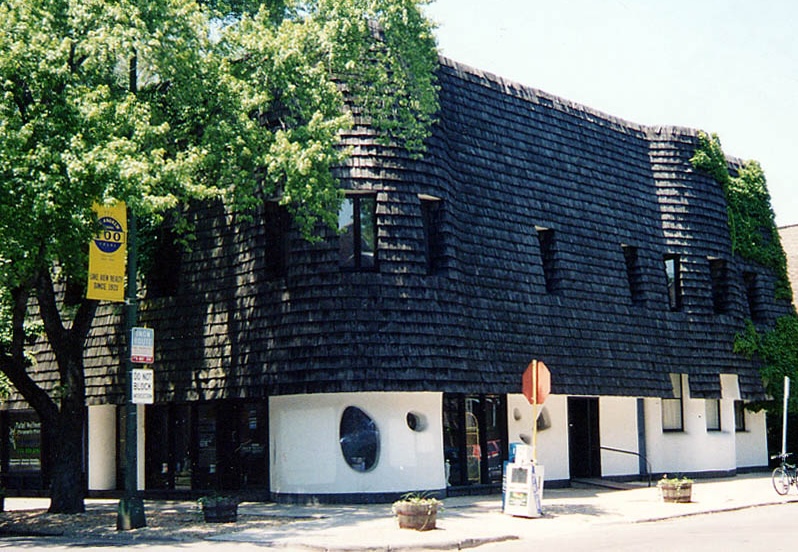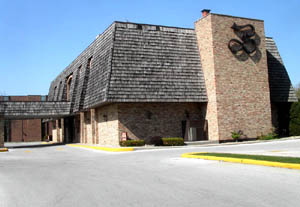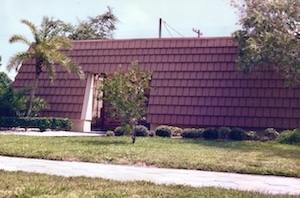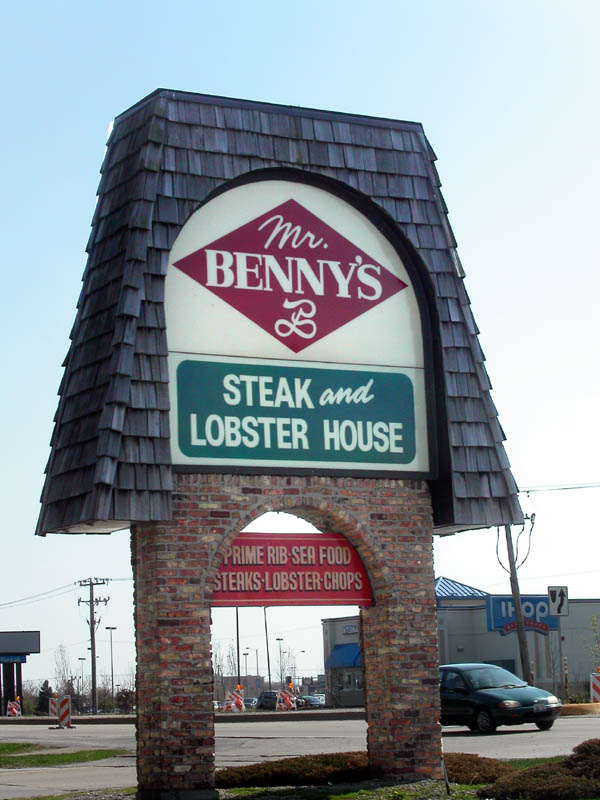The Mansards





|









|
The Mansards





|









|
Like so many popular design styles, the 20th century mansard roof was reviled in its original flowering by people of refined taste, in this case as a species of suburban schlock. Might the passage of time might promise a kinder treatment?
Some popular styles, like the over-top-extremes of Art Deco, ultimately proved just as high in style as they aspired to be. Mansardism is different, its ambition having barely reached middlebrow in the first place. But even the clunkiest mansards eloquently express a flavor of their time and place. As that time and place recede, their appeal as period pieces is liable to increase, even if we've yet to reach the tipping point into mansard nostalgia.
From a high-style point of view, the modern American mansard's origin is mostly disreputable. Mansard roofs were popular in Second Empire-inspired architecture of the 19th century, and later on they were a common feature of mid-century Hollywood Regency homes, but those buildings were a regional outlier (and as a style beloved of movie stars, not universally considered in the best of taste). The real birth of 20th-century mansardism appears to have been in the 1960s. That's when oil companies started replacing their Modernist gas station architecture with an earthier look, according to Chester Liebs, SCA's founding president, in his 1985 book Main Street to Miracle Mile
It is McDonald's, though, that might best be credited with the mansard roof's proliferation.

|
With the original arched restaurants increasingly considered eyesores (by some, anyway), Chairman Ray Kroc wanted a less polarizing design, according to Philip Langdon's recounting in his Orange Roofs and Golden Arches of 1986. The company chose a new flared roof -- not technically mansard but close enough for the untrained eye. It would be an easier sell to local zoning and building committees with control over potential new locations while communicating a more wholesomely traditional message than the rooftop arches it replaced. Plus, Langdon writes, "The 'mansard' was the least expensive means of displaying a somewhat traditional roof yet creating plenty of space for restaurant equipment."
The appeal of that wholesome-seeming message was not lost on other architects, builders and their customers. The mansard represented an inexpensive upgrade and soon became ubiquitous on American shopping strips and residential streets alike.
Wrote Liebs: "Unlike the Victorian mansard, the modern versions are usually cosmetic appliques rather than integral parts of a structure's roof.... The new mansards proved extremely versatile disguises for toning down the visual persona of wayside vending."
On the residential side of things, Liebs quotes another author (and SCA founder), Arthur Krim, who wrote in 1977, "It was found that the clear trapezoidal form of the 'French Provincial' mansard roof seemed to provide a domestic scale and secure form to the barren edges of the apartment blocks and tract houses."
Although the intention was to add some grace by echoing a 19th century French style, the look quickly became synonymous with fast-service roadside crud (much like what happened with neon signs) and ticky-tacky suburban taste. These dubious associations, which arose rather quickly, made slapping on a mansard to add nuance and class seem especially perverse. The benighted sensibility of so many remodelers and builders provided architectural fodder for humor in the unabashedly ironic decades that followed the 1970s. Mansards, residential and commercial, made the roadside landscape laughable in direct proportion to how close they hung to the ground.
 |  |  |
Times change, however. On the one hand, the mansard can be faulted as a step toward the slicker but vapid styles that came to dominate new-home architecture in the 1990s: repro Victorian and ersatz chateau. On the other hand, the clumsiness of those '70s and '80s mansards is beginning to seem charming. There is a certain naive energy in their pastiche, an energy lacking in today's more refined, self-serious travesties of architectural aspiration. Plus, obsolescence is a great redeemer of aesthetic junk. Those 40- and 50-year-old mansards have gained resonance as emblems of a lost time, even a certain lost innocence (innocence of taste, anyway).
It's hard to say which part of the country led the way, but the Chicago area played a leading role in the mansard craze. Kroc opened his prototype sit-down restaurant, with what its architect called a "double mansard" design, on Lincoln Highway in south suburban Matteson, Illinois, in 1969. That shining example (coincidentally the primary McDonald's of my youth) helped promote a mansardian abundance all across Chicagoland.









|
If, as Lieb indicated, the American mansard style represented a triumph of form over function, its apotheosis might best be found not in the buildings the roofs topped but in a prolific appendage -- the mansard sign. Placing a roof atop a commercial sign is an exercise in pure, non-functional form. Making a sign a mansard was style with a small s -- style as defined by real estate brokers, insurance agents and steakhouse owners. Corporate McDonald's may have helped originate the American mansard, and commercial architects spread it, but in these signs with roofs mansardism became a true vernacular.
High Modernisms' embrace in the popular imagination was short-lived to the extent it existed at all, and if adding a mansard roof to a building brought a welcome change in the direction of warmth and distinction, why not achieve the same resonance by putting one on the sign? Not all sign roofs were mansard, but it seems like most were, ideally matching the buildings that hosted the businesses they promoted.





|
Mansards are becoming scarcer now, the fate of nearly every architectural fashion, and mansard signs are disappearing even faster than the buildings, given the perishability of roadside signage. Contemporary style, and economics, don't encourage such flourishes, so when signs are renovated or replaced the roofs come off.
The black-and-white photos on these pages were shot in the 1980s, when mansard signage was at its peak. The color photography is more recent and includes a few non-mansard executions of the lidded sign. I've also included some favorite mansard buildings. The pair in my late 19th-century neighborhood (shown on the left at the top of this page) look fairly ridiculous in their context, but they are becoming quaint in spite of themselves. 2024 update: The house on the left at the top of the page, referred to by neighbors as "the professional building," was demolished to create a bigger yard for the house next door.


|
View another gallery of mansardism.
The Latest Stuff | Roadside art | Outsider pages | The idea barn | About | Home
Copyright Interesting Ideas 2003-2024